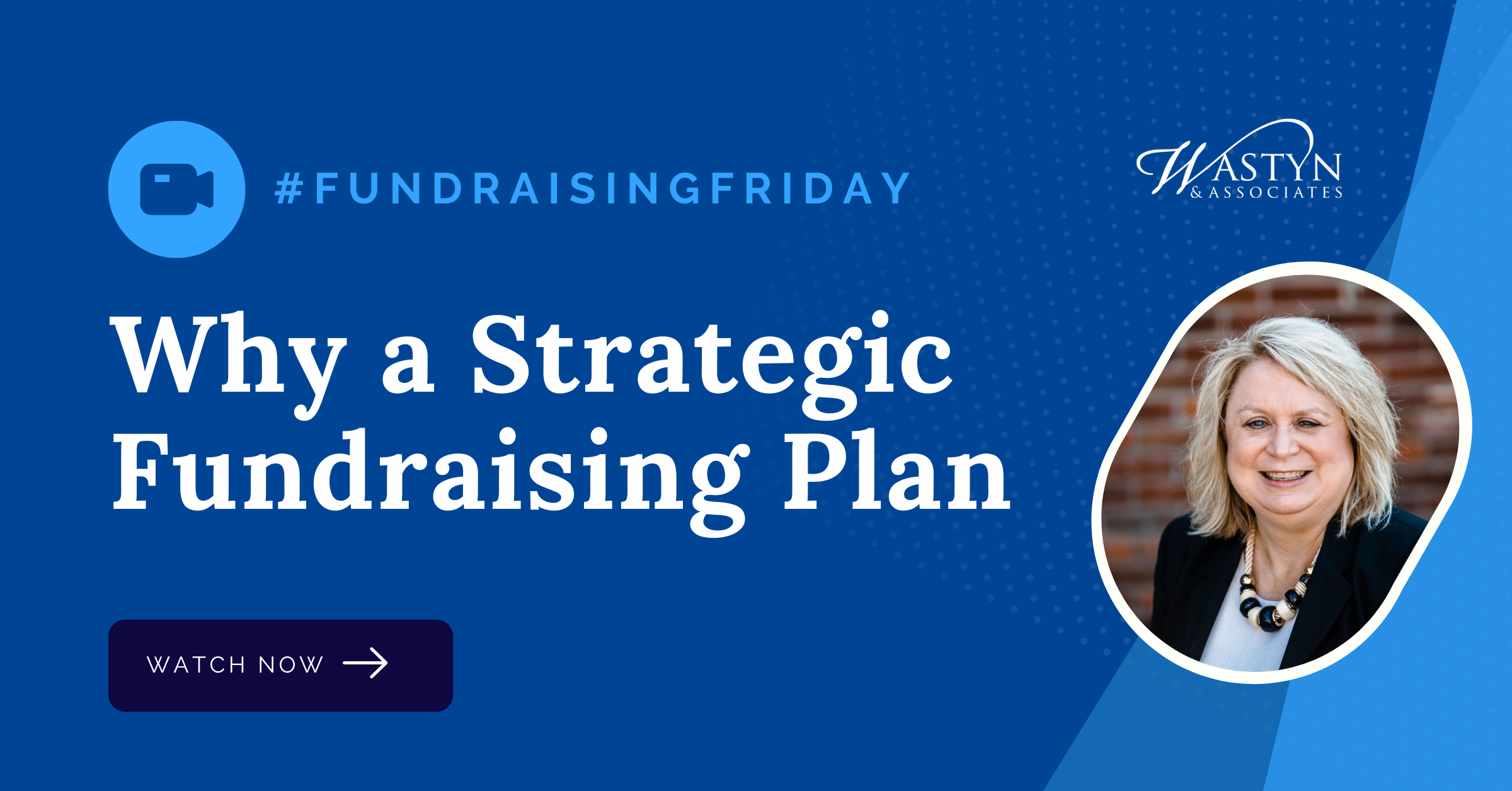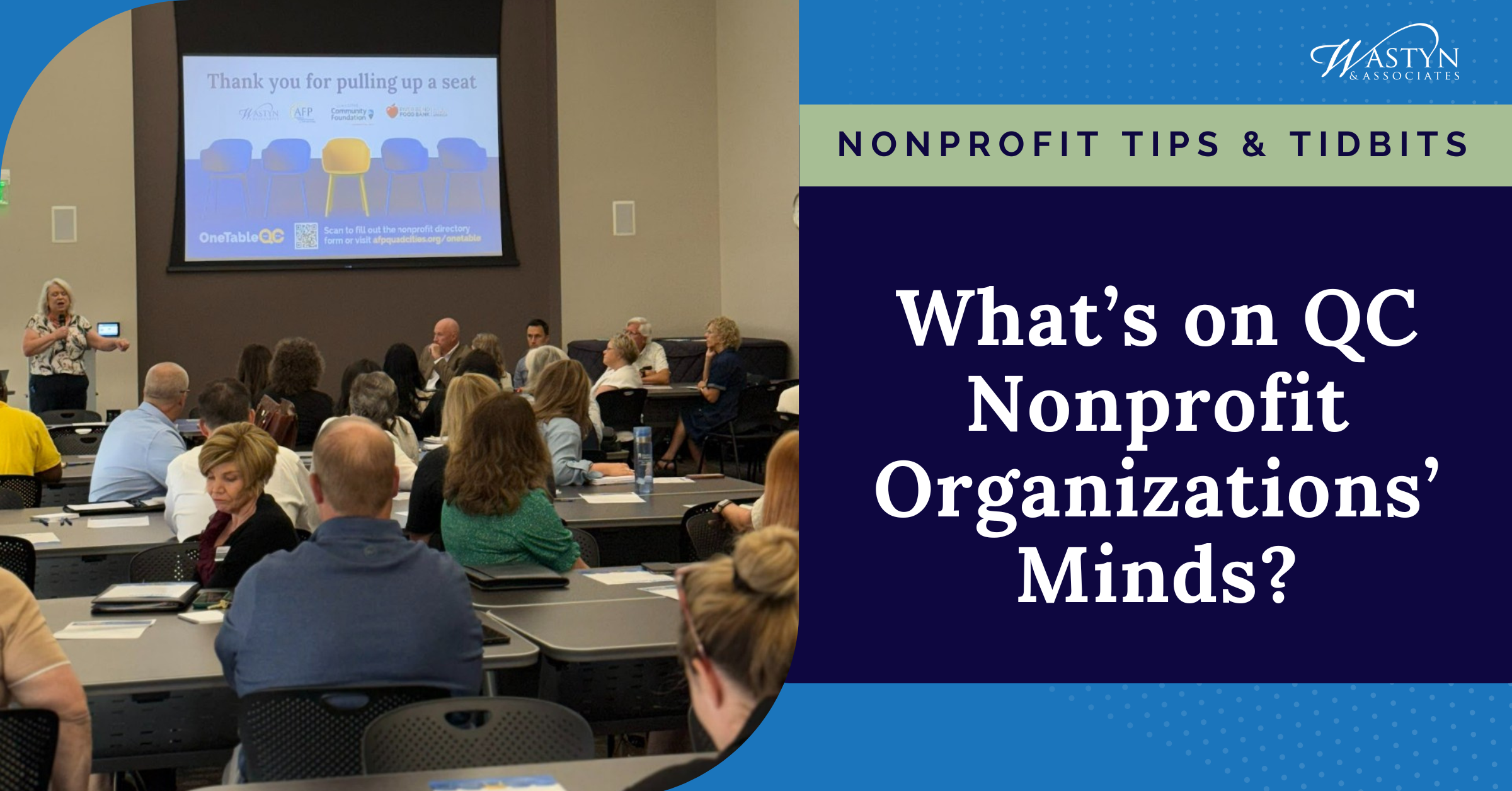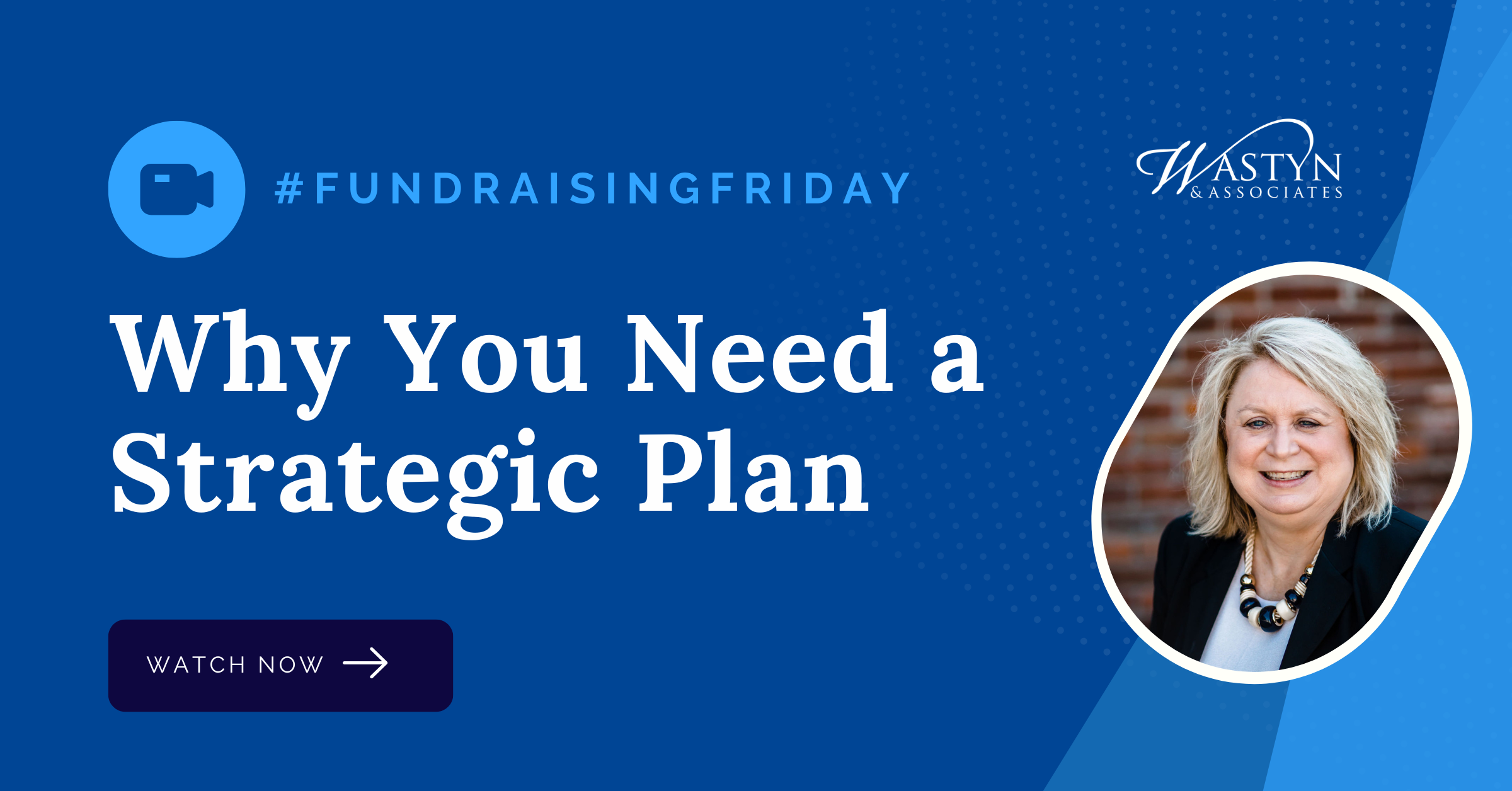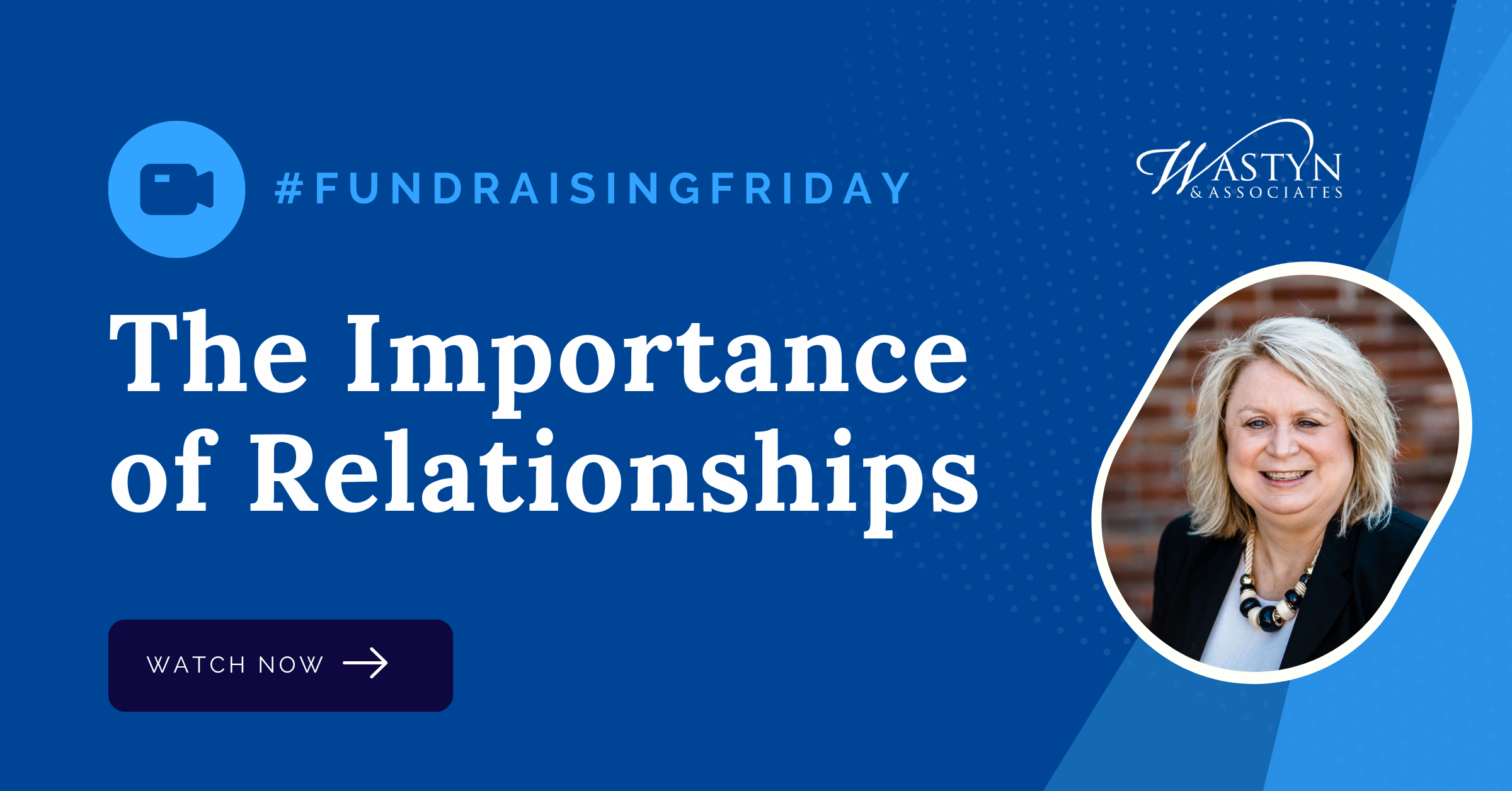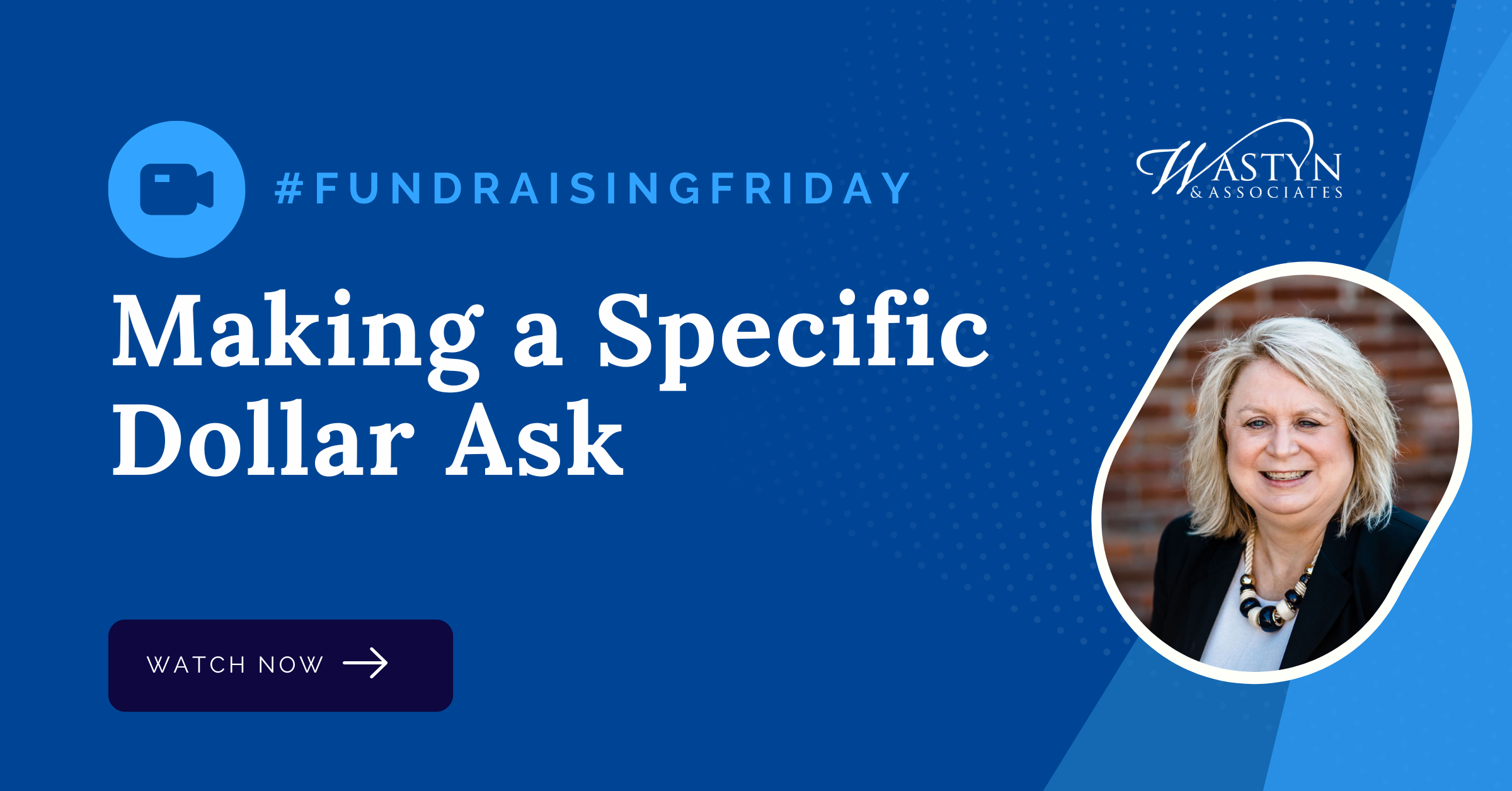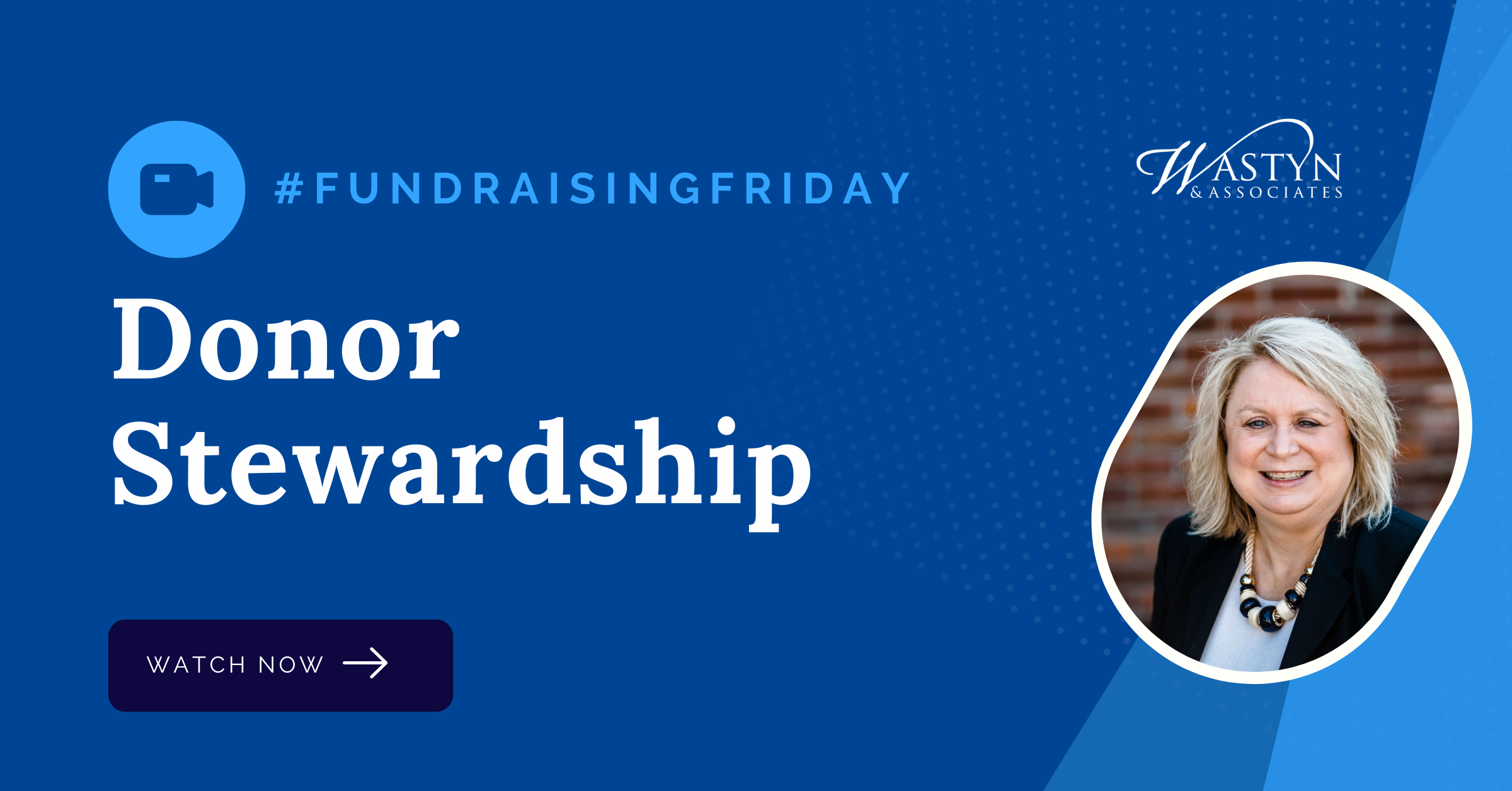Nonprofit Tips & Tidbits
Filter By: CATEGORY
Filter By: TYPE
- #FundraisingFriday 262
- Nonprofit Tips & Tidbits 235
- Donor Management 32
- Professional Development 29
- COVID-19 28
- Fundraising Asks 20
- Major Gifts 18
- Volunteers 18
- Grants 14
- Change Management 12
- leadership 11
- Events 10
- Annual Fund 9
- Self-Care 9
- Storytelling 7
- Giving Tuesday 6
- Onboarding 6
- Organizational Management 6
- Philanthropy 6
- Planning 6
- Stewardship 6
- Teambuilding 6
- iWave 5
- Crisis Management 4
- Marketing & Communications 4
- Writing 4
- Year End Giving 4
- Conflict Resolution 3
- Diversity 3
- Recruitment 3
- Sponsors/Sponsorships 3
- Training/Learning 3
- Campaign Management 2
- Endowments 2
- Governance 2
- Learning 2
- Quad Cities 2
- Data 1
- General 1
- Planned Giving 1
- team 1
Closing Your Year Strong
With 30% of all donations made during the month of December, how you finish the year with your appeal strategy might make or break your fund development goals and your organization's budget. These tips can help you end the year strong to maximize the revenue you raise.
Creating Your Elevator Pitch
A 30-45 second explanation of your organization and why it's important, an elevator pitch provides an important tool for educating the public about your organization. When created with your leadership team, board and staff, it also empowers them to both better understand your organization and to share a consistent message with their friends and network.
How to Create a Fund Development Plan
Last time we talked about why you need a fund development plan. This video walks through the steps to gather the data that will inform your plan and how to use that data to develop the strategies to move your organization and its fund development work forward.
Diversifying Your Revenue Streams with a Social Enterprise
Nonprofits don’t exist to make money — but they do need it to make an impact. A social enterprise can help you do both. Read more to learn how to build a mission-driven business venture that strengthens your sustainability, credibility, and connection to your cause.
Why You Need a Fund Development Plan
One type of strategic plan focuses on your fund development work. Are you spending time in a way that will raise the most money for your organization? Are you meeting best practices benchmarks? A plan can help you determine that and create strategy to fill in any identified gaps.
State of Quad Cities Nonprofits - September 2025
At a meeting back in February, my staff and I talked about some of the likely challenges with which we thought our clients lived after the barrage of executive orders that the current administration had released at that time.
As executive orders and funding freezes began to feel more common, we started collecting data in a quarterly Federal Grant Impact Survey. Today's blog post highlights are most recent findings and the state of Quad Cities nonprofits today.
Why a Strategic Fundraising Plan
One strategic plan that I recommend all organizations have is a strategic fund development plan. It allows you to chart out your long-term and short-term goals, find the gaps in achieving that goal, and develop specific steps to get there.
What’s on Quad Cities Nonprofits Organizations’ Minds?
Last week, I had the honor of cohosting the inaugural Table Talk session of the OneTable QC initiative, a joint venture between Wastyn & Associates and the Quad Cities Chapter of the Association of Fundraising Professionals. The event brought together nearly 60 local nonprofit leaders from various sectors to discuss their realities in the current political and economic environment, to share what they anticipate as the various elements of the Reconciliation Bill get implemented, and to brainstorm ways to minimize these impacts on their organizations and the people they serve.
Why You Need a Strategic Plan
Organizations that have a good strategic plan will more likely achieve their goals, their goals will more likely move them toward their vision of success, and they will have more engaged board members and staff. Learn why you need a strategic plan and how a good planning process can get you there.
Importance of Relationships
Fund development work relies on relationships. People give to people. Understand the importance of building relationships and leveraging your board and volunteers to expand your circle of relationships to expand your fundraising success.
5 Ways to Encourage Your Board Members to Advocate for Your Organization
Having advocates on your board does not happen overnight nor does it happen by osmosis or chance. You have to prepare them. These 5 tips can help you grow a more advocating board.
Making a Specific Dollar Ask
You've probably heard me say many times that you want to make a specific ask of a donor, meaning putting a dollar amount in front of them. Learn why and how and hear an example of how one organization may have left money on the table by not making a specific ask.
Maximizing Your Membership Program
Your membership program isn’t just fine. It could be fundraising gold. If you’re not building relationships, you’re leaving dollars (and future board members) on the table.
Donor Stewardship
Now is the perfect time to reach out and thank your donors for investing in your organization and show them what a difference they make in fulfilling your mission. At the halfway point through the year, giving tends to slow down which should give you some time to implement some stewardship activities while cultivating your donors to give again at the end of the year.
Federal Funding Changes Continue to Reshape Quad Cities Nonprofits
In our latest survey, 90% of Quad Cities nonprofits say they’re feeling or anticipating the squeeze. That means real impacts on local programs, staff, and services our community relies on. But there’s strength in this story, too. Nonprofit leaders are stepping up, and so can you.
The Basics of Nonprofit Budgeting
Whether you are a board member, new nonprofit executive or new to development work, understanding the basics of budgeting will go a long way toward your career and organizational success. This overview discusses the basics of organizational and program budgets and how to create them with a specific focus on smaller organizations who do not have a dedicated finance person.
5 Reasons You Need a Major Gifts Program
If you want to grow your organization's revenue, invest in major giving. This blog post covers 5 key reasons to adopt this development strategy today.
Understanding Financial Statements
Do financial statements get you confused? What they are and how to read them? This short primer will give you an overview of the most common financial statements - the profit and loss statement and the balance sheet, useful to new grant professionals, executive directors, board members or anyone who does not feel comfortable with this way to understand their organizations financial position.
9 Trends in Philanthropy and Fund Development
Here at Wastyn & Associates, we do our best to stay current with these trends so we can provide you with the most relevant advice for today’s world, grounded in well-established elements of human nature, human motivation, and basic economics.
Today, we share with you 9 trends that you and your organization might consider embracing – or at least monitoring.
Welcoming New Donors
Because it costs so much more to recruit new donor than to retain a current donor, how you treat new donors can make a significant difference in your bottom line. These three strategies can help you retain more donors … and raise more money.







